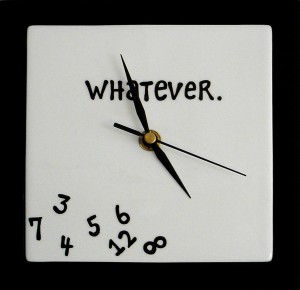 Yes, scheduling tools like Hootsuite, Buffer etc. make it convenient for you to make sure your social media presence has regular content.
Yes, scheduling tools like Hootsuite, Buffer etc. make it convenient for you to make sure your social media presence has regular content.
I know… you’re busy and sometimes forget or don’t have time to post.
I don’t care.
It’s way too easy for businesses – especially car dealers – who find little time to pay attention to their social media networks to pre-schedule a bunch of posts and forget about it until the next month approaches and they need to fill up that content bucket with another month’s worth of posts.
I manage quite a few social media accounts for both clients and myself and very rarely do I schedule posts. Typically the only time I will is if I know I’ll be travelling on a certain day or otherwise unable to post. This never exceeds more than a day, however.
Here are a few reasons why I don’t believe you should preschedule posts…
- Social media is a dynamic conversation between you and your consumers (who are hopefully not in India). Scheduling content does something that harms your business and social media marketing worse than anything else possible…. It disconnects you. If you do not pay attention to your social media accounts on a daily basis, you WILL miss opportunities to connect. You don’t script out and preschedule text messages to your friends, do you? The most important idea here is that prescheduling posts allows you to feel as if you’ve done your “social media” for the month and actually provides you with justification that it’s OK not to check your accounts.
- Chances are that your content will be old by the time it’s posted. Duplicate content – no matter how good it is – is destined to become part of the “..and others” section of a Facebook news feed (as in “Arnold and 10 others shared a link”). Not scheduling posts allows you to find recent content which makes it more interesting to an audience. If your content is 2 weeks old by the time it is posted, the chances that other people will already have shared it makes it less likely to be engaged with. This follows the “first to market” mentality. Always strive to be the first page to share content when possible.
- Edgerank is no more. Now Facebook’s algorithm takes into account 100,000+ factors when deciding whether to show your content to your audience. It rewards high-quality content that is unique and engaging. If you feel the need to share content that has already been shared, share it as a picture with the link in the picture’s caption. This will avoid you getting clumped together with everyone else that shared that content. Better yet, find the same content but via a different source (ie. link to the same story hosted somewhere other than the source that everyone else is sharing).
- Make it your goal to interact with people even if that means you go fishing… Do a Twitter search for your brand and find a tweet from a recent buyer of your dealership’s franchise… welcome them as a new brand owner, congratulate them on their new vehicle, tell them to have fun car shopping, retweet their cool picture of a car, etc. You can limit your search to a radius of your dealership so you will be interacting with people that matter… potential customers. They’ll thank you, retweet you and favorite your tweet. Take the time to thank your new followers. This is only possible if you’re paying attention and you can’t pay attention if scheduling content lulls you into complacency.
- Not pre-scheduling content also allows you to make sure that the content is posted correctly and timely in a manner native to the platform on which it is being posted. What if Twitter is down when your scheduled post is supposed to be sent? If you aren’t paying attention, it may never get sent. It also forces you to read it again which assists in identifying spelling errors. You get to see it go live and have a chance to correct it before anyone sees it. Your online image is just as important as your off-line. Make sure your posts actually post, are tailored for the network they are being posted on and look professional.
Even though I’m hyperactive on social media, I’ve found that not scheduling posts allows me to stay more connected and responsive with my audience whether I’m posting to my profile or posting to a client’s accounts. I can be reactive when needed and interact when people make comments – even if it’s simply “liking” their comment. That shows the person commenting that you’re listening and present which makes them more likely to comment in the future.
Don’t fall into the trap of convenience. You will sacrifice quality, lessen engagement and reduce the chances you have of showing up in your audiences’ news feeds. There’s nothing “social” about simply pushing content.
If you can’t be engaged in your own social media presence, how can you expect other people to be engaged with you?
Note: I have a few less reservations about scheduling content for your personal profile. It does allow you to share more relevant content without spamming your friends. My advice in this article mainly applies to business social media accounts. I rarely schedule personal updates and shares for the same reasons contained in the article but that’s just my personal preference.